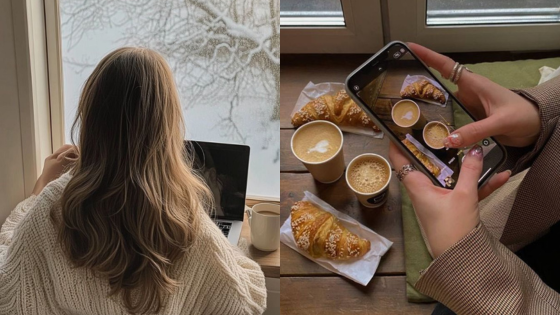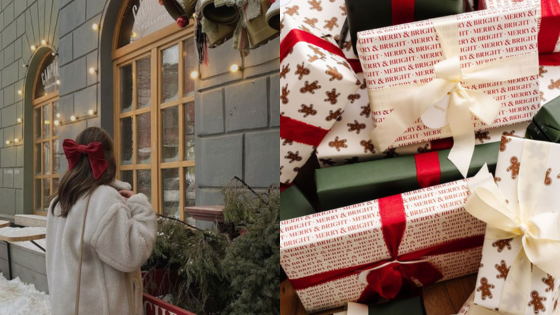Decorating a Christmas tree is a cherished holiday tradition that brings joy and warmth to your home. To create a stunning display, start by selecting a tree that fits your space and style, then thoughtfully choose a theme that reflects your personal taste. With the right approach, your tree can embody the holiday spirit and become a beloved centerpiece for festive gatherings.
Lighting plays a crucial role in setting the mood, so ensure that you have a mix of both string lights and special toppers that draw eyes upward. The final touches, such as ornaments and garlands, add personality and charm, making your tree uniquely yours.
Creating a beautiful Christmas tree is both an art and a labor of love; let your creativity shine as you transform this timeless symbol of the season into a stunning work of art.


Key Takeaways
- Choose a Christmas tree that complements your space.
- Design a theme that showcases your personal style.
- Use lighting and ornaments to enhance the festive atmosphere.
Choosing the Perfect Christmas Tree
Selecting a Christmas tree is a key part of holiday decorations. You can choose from various types, sizes, and tree materials. Each choice affects the look and feel of your festive space.
Types of Christmas Trees
When it comes to types of Christmas trees, you have options that cater to different tastes and preferences. Here are a few popular varieties:
Natural Trees: These are traditional and come in various species like Douglas Fir, Fraser Fir, and Noble Fir. Each has a unique scent and aesthetic.
Artificial Trees: Known for convenience, these trees come pre-lit or unlit. They can last for years and are often designed to look realistic.
Flocked Christmas Trees: These trees are artificially coated with white or colored “snow.” They add a wintery touch but can require extra care to maintain their appearance.
Mini Christmas Trees: Ideal for small spaces, these trees bring holiday cheer without overwhelming a room. They work well on tables or as part of a festive display.
Selecting the Right Size
The size of your Christmas tree is crucial for achieving the perfect look. Consider the following factors:
Ceiling Height: Measure your ceiling to determine the tallest tree that fits comfortably. A good rule of thumb is to leave at least 6 inches from the top of the tree to the ceiling.
Room Dimensions: The width of the tree matters too. Ensure it fits the space without crowding other furniture. Aim for a tree that allows some walking space around it.
Personal Preference: Some prefer large, statement trees, while others may choose smaller, more understated designs. Consider how much of a focal point you want the tree to be.
Opting for Natural or Artificial Trees
Choosing between a natural or artificial tree depends on your lifestyle and preferences.
Natural Trees: They offer a classic look and a delightful aroma. However, they require regular watering and can shed needles, leading to more maintenance.
Artificial Trees: These are low-maintenance and can be reused for many years. They come in a wide range of styles, including pre-lit options. Quality faux trees can look very realistic, and many are designed to be flame-resistant.
Consider your holiday traditions and maintenance preferences when making your choice.


Designing Your Theme
Establishing a theme for your Christmas tree creates a cohesive look. Focus on your color scheme, ornament styles, and natural elements to bring your vision to life.
Determining Your Color Scheme
Start by selecting a color scheme that reflects your style. Popular choices include classic red and green, elegant gold and white, or trendy pastels.
Consider these options:
- Traditional: Rich reds, greens, and golds.
- Modern: All-white or monochromatic schemes.
- Whimsical: Bright pastels with a mix of colors.
Utilizing ribbons can enhance your color scheme. They can be layered or draped throughout the tree to add texture. Choose wood bead garlands in complementary colors to tie your look together.
Selecting Ornaments by Style
When choosing ornaments, focus on styles that align with your theme. Mix different textures, such as glass, wood, and fabric, to create visual interest.
Types of ornaments to consider include:
- All-White Ornaments: For a serene, elegant design.
- Vintage Pieces: To add nostalgia and character.
- Handmade Ornaments: For a personal touch.
Balance ornament sizes for a polished look. Small ornaments can fill gaps, while larger ones serve as focal points.
Integrating Natural Elements
Incorporating natural elements adds warmth and authenticity to your tree. Consider using items like pinecones, holly, or eucalyptus.
Suggestions for integration:
- Pinecones: Attach them directly to branches or use them as ornament hangers.
- Holly Berries: Use them as accents around the tree for a pop of color.
- Eucalyptus: Drape it around the tree to create a soft, fragrant touch.
These elements complement your color scheme and enhance the tree’s texture. Embrace the beauty of natural materials to elevate your design.


Lighting and Topper
Lighting and the tree topper are essential elements that can elevate the overall look of your Christmas tree. Properly stringing lights creates a warm ambiance, while a well-chosen topper adds a personal touch to your decor.
Stringing the Lights
When it comes to stringing your lights, consider using LED lights for energy efficiency and brightness. Start at the base of the tree and weave the lights around the branches, moving upward.
For an even distribution of light, make sure to wrap the lights both around and in between the branches.
- Tip: Use a light meter to ensure that you have enough lights; a good guideline is 100 lights per foot of tree height.
To prevent tangling, secure your string lights with twist ties or decorative clips. Remember to check that all bulbs are functioning before you position them on the tree.
Choosing a Tree Topper
Selecting a tree topper is an important decision that can define your tree’s style. Common options include stars, angels, or even custom ornaments that reflect your personality.
When choosing, consider the size of your tree and how the topper complements other decorations. A tall, striking star can enhance a larger tree, while a simple angel may suit a smaller one better.
- Material Choices: Toppers come in various materials, including metal, fabric, and glass. Each provides a different aesthetic and durability.
Make sure the topper is securely attached, as a wobbly or poorly placed topper can detract from your overall design.


Final Touches
To create a memorable Christmas tree, focus on unique accents and personal touches that highlight your theme. Thoughtful additions can elevate your tree, making it more visually appealing while reflecting your style.
Adding Unique Accents
Incorporate eye-catching features like a golden Christmas tree topper or vintage-style ornaments to create focal points. These elements draw attention and can showcase your theme, whether it’s traditional, rustic, or modern.
Consider using colored ribbons or delicate string lights wrapped around branches. Choose metallics or bold shades that complement your ornaments. Mixing textures with items like pinecones or even feathers adds dimension.
You can also hang paper snowflakes or artistic decorations on lower branches for a whimsical touch. Ensure these accents tie together with your tree’s color scheme for a cohesive look.
Incorporating Handmade Decor
Adding handmade decorations can introduce a personal touch that highlights family traditions. You might create your own ornaments, such as gingerbread cutouts or personalized photo ornaments.
Using materials like felt, wood, or glass can enhance the rustic charm of your tree. You can also involve family members in crafting unique pieces. This creates memories while enriching your holiday décor.
Additionally, consider incorporating children’s craft projects. This not only personalizes your tree but also makes it a conversation starter during gatherings.
Setting Up for Longevity
To maintain the beauty of your tree throughout the season, ensure secure placement of ornaments. Use strong wire for heavier pieces and consider a mix of shatterproof ornaments for durability.
When placing decorations, balance is key. Distribute larger ornaments evenly and fill gaps with smaller ones to avoid a cluttered look. Regularly check for any worn or damaged decorations to keep your tree looking fresh.
Finally, consider how your tree will fit your space. A rustic Christmas tree might feature burlap or natural elements, appealing to a cozy aesthetic while ensuring safety by keeping heat sources away from branches.
- 23shares
- Facebook0
- Pinterest23
- Twitter0


